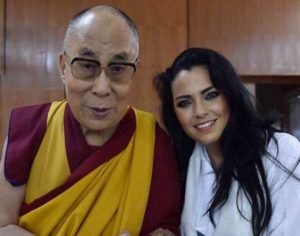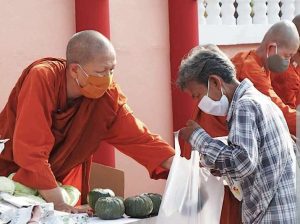
A tip of the hat to U2 for our title— a line from their song “One,” recorded way back in 1991.
Of the many wicked problems we are swimming through these days, one that seems all-pervasive is how we navigate through sameness and difference. Of course this is not new. But what is new is the immediacy with which social media puts those differences in front of us, and the way that algorithms provoke outrage and conflict. It is perhaps understandable that some of us react by going to the other end of the spectrum, reifying the message that “we are all the same,” underneath everything.
But I’m not so satisfied with that reaction. As an anthropologist who has been trained to pick up on contrasts in equal measure to similarities, my tendency is to sit with any discomfort that the differences bring up rather than quickly retreating to a false sense of harmony. We have so much to discover about what it means to be human by focusing on our incredible diversity. If someone’s way of seeing the world or responding to a particular situation makes you uncomfortable, there may be something to learn there. This is what authentic diversity does: it stretches us beyond our comfort zone and offers multiple ways of addressing a problem, or simply of being in life.
As a white girl growing up in Southern California, coming from German/Eastern European ethnicity—which honestly I wasn’t all that aware of; like many white American kids I suffered from a disconnect with my heritage—I didn’t have much culture in common with my predominantly Chicano/a friends and schoolmates. I was in the interesting position of being in a privileged majority in the larger world, and yet being in the minority and an outsider in my school. On weekends I’d hang out with my friend Pattie and her family, where menudo would be served for breakfast and the conversations were often loud and full of laughter—a contrast to my much less expressive family. I remember my friend’s brother had a poster of the Mexican revolutionary leader Emiliano Zapata taped to his bedroom door; my introduction to emancipatory movements. That’s where I first learned what it means to be a participant observer, how to find a way to connect across differences and to appreciate the gifts of diversity.
i recently got into a bit of a conversation, if you can call it that, on Facebook with someone who commented on an excerpt from this BDG article about the annual Sakyadhita conference, which took place in June of this year. Sakyadhita is an international grassroots network with a mission of connecting Buddhist women.
Here’s the excerpt from the article, written by BDG senior editor Craig C. Lewis. The quote comes from Gelongma Pema Deki:
The organization does seem to be strengthening and growing each year. Yet, in a strange way, I wish that more men came to Sakyadhita. Sometimes, when you hear the voices of women explaining their situations and the difficulties they’ve gone through to obtain teachings or recognition or temples and so on, it’s really heartfelt and you feel a camaraderie with them and huge respect for them. But sometimes I’d like more male participants to hear the voices of these women. Although it’s wonderful having this as largely a female gathering, and very unusual in our world, I just don’t know how well the male sangha really understands the situation of the female sangha a lot of the time. And so some dialogue or some listening to each other, I think, could be important.*
This comment on Facebook followed, by someone identifying as male:
Right!..so many retreats separate men and women……. I find it disappointing to not get all perspectives.
That’s where my engagement started. When I first read the comment, I went to my default stance of advocating for diversity and separate spaces, as needed, for people to come together. As someone who identifies as a woman, I know how essential it’s been for me to have retreats and other spaces with only women, men not included. So when I hear a man bemoaning what he perceives as the lack of integrated spaces, honestly I just don’t have much patience. Everyday life offers plenty of opportunities for people to learn from and understand each other, if they are attuned in that way. When you’re a member of a group that has been typically marginalized by another group: e.g., people of color, women, queer, working class, differently abled, you know the power that comes from gathering together in your own spaces to honor the struggles you’ve experienced and to envision creative ways of accessing and expressing power. I don’t want anyone taking that away from us.
The commenter’s words point to a place of dynamic tension in how we relate to sameness and difference. There’s often a tendency among those in privileged groups to jump right to the “we’re all one” messaging, for example, “I don’t see color.”
This verse, from the “Sandokai” (Identity of Relative and Absolute)** is one that I find very helpful in perceiving and holding matters of diversity:
The spiritual source shines clear in the light;
the branching streams flow on in the dark.
Grasping at things is surely delusion;
according with sameness is still not enlightenment.
The verse cautions us against the “everything is one, we’re all the same” mentality, while at the same time reminding us that we are more than our differences, that there is something that connects us all. This is a paradox worth a lifetime of exploration and practice.
Returning back to the interview with Gelongma Pema Deki, I think she is pointing to another element along this sameness/difference spectrum: the need to be heard and witnessed by “the other.”
I fully understand her point. The key is that men who would be witnessing these presentations and dialogues need to be well versed in the arts of humility and listening. That’s a tall order, given that’s not how most males are conditioned in many of our societies—see Rebecca Solnit’s excellent essay “Men Explain Things to Me.”*** But I can put it out there and hold the big vision, right? If you are a male (or a member of any other privileged group) seeking to understand someone different from you, please learn how to listen. Please learn how to identify your own conditioning and assumptions before speaking on someone else’s experience. Please study cultural humility.
This dance between sameness and difference can be incredibly rich, but only if we don’t grab on with too much attachment to one side or the other, and only if we’re willing to examine our own places of ignorance. As the “Sandokai” wisely says: branching streams flow on in the dark.
* Daughters of the Buddha: From Banking to Buddhism – A Conversation with Gelongma Pema Deki (BDG)
** Sandokai (Wikipedia)
*** Men Explain Things to Me (Guernica)
Related features from BDG
The Dharma of Listening and Speaking, Part One
Buddhistdoor View: Hong Kong’s Turmoil – Spiritual Witnessing to Borrowed Time
Life Is Not Useful
Buddhism and Ethics
No Easy Answers: Gesshin Claire Greenwood on Zen Life, Capitalism, and Feminism
Rita Gross: “Buddhism and Feminism have always shared a voice”














